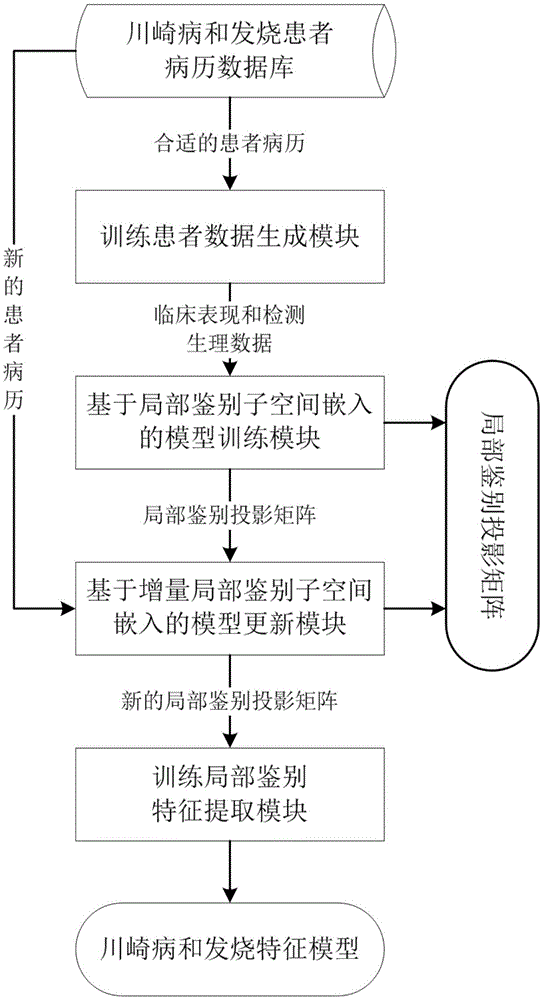Kawasaki disease and fever diagnosis system based on embedding of incremental local discrimination subspace
A diagnosis system and subspace technology, applied in the field of pediatric disease diagnosis system, can solve the problems of difficult online update, inability to fully mine nonlinear local information, and large amount of calculation.
- Summary
- Abstract
- Description
- Claims
- Application Information
AI Technical Summary
Problems solved by technology
Method used
Image
Examples
Embodiment Construction
[0075] The present invention will be described in detail below in conjunction with specific embodiments. The following examples will help those skilled in the art to further understand the present invention, but do not limit the present invention in any form. It should be noted that those skilled in the art can make several modifications and improvements without departing from the concept of the present invention. These all belong to the protection scope of the present invention.
[0076] Such as figure 1 , 2 As shown, this embodiment provides a Kawasaki disease and fever diagnosis system based on incremental local discriminant subspace embedding, which includes two subsystems: a training subsystem and a diagnosis subsystem.
[0077] Such as figure 1 As shown, in this embodiment, the training subsystem includes the following modules:
[0078] Train the patient data generation module to select Kawasaki disease children with fever for more than 3 days, 4-5 typical Kawasaki ...
PUM
 Login to View More
Login to View More Abstract
Description
Claims
Application Information
 Login to View More
Login to View More - R&D Engineer
- R&D Manager
- IP Professional
- Industry Leading Data Capabilities
- Powerful AI technology
- Patent DNA Extraction
Browse by: Latest US Patents, China's latest patents, Technical Efficacy Thesaurus, Application Domain, Technology Topic, Popular Technical Reports.
© 2024 PatSnap. All rights reserved.Legal|Privacy policy|Modern Slavery Act Transparency Statement|Sitemap|About US| Contact US: help@patsnap.com










